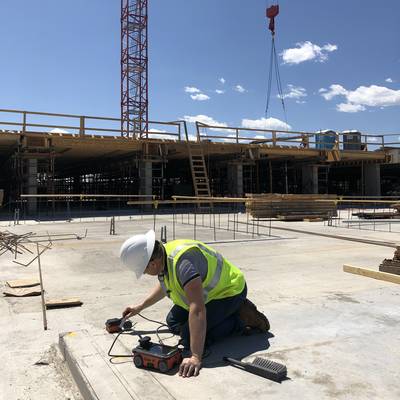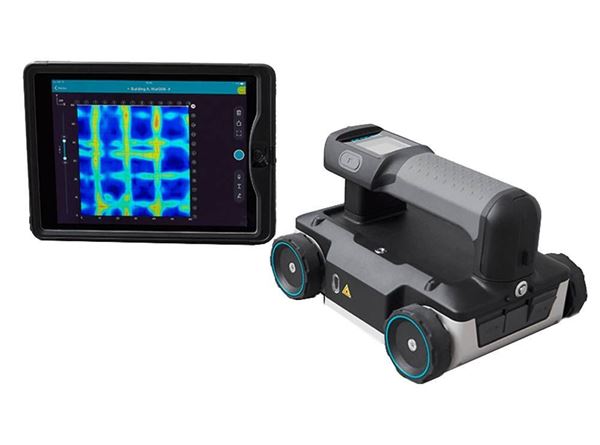The Ultimate RainierGPR Concrete Scanning Service Explained
The Ultimate RainierGPR Concrete Scanning Service Explained
Blog Article
Discovering the Midst: A Comprehensive Guide to Concrete Scanning and Its Diverse Applications
In the realm of building and framework development, the careful procedure of concrete scanning holds a critical function in ensuring the architectural stability and security of projects. As technology proceeds to evolve, the applications of concrete scanning have actually expanded much beyond simple surface-level evaluations. From detecting rebar and post-tension wires to drawing up channels and gaps concealed within concrete frameworks, the capabilities of modern-day scanning strategies are both remarkable and vital. The true deepness of concrete scanning's potential reaches even better, branching into unforeseen fields and sparking ingenious services. The interconnected internet of possibilities that concrete scanning presents is not just fascinating yet additionally crucial for the advancement of different sectors.
Importance of Concrete Scanning
Understanding the significance of concrete scanning is crucial in guaranteeing the safety and honesty of structures during building and construction and improvement jobs. Concrete scanning uses innovative modern technologies such as ground-penetrating radar (GPR) and electromagnetic induction to identify ingrained objects, gaps, or various other abnormalities within concrete structures.
Furthermore, concrete scanning plays a pivotal function in making sure compliance with structure codes and policies that mandate the defense of existing architectural components during building and construction tasks. By precisely drawing up the internal composition of concrete, scanning modern technologies enable construction professionals to make educated choices that support the architectural stability and longevity of buildings and facilities projects. Basically, the relevance of concrete scanning hinges on its capability to guard both the architectural stability and the workers associated with building and construction ventures.
Technologies Used in Concrete Scanning
Concrete scanning counts on innovative modern technologies such as ground-penetrating radar (GPR) and electromagnetic induction to precisely identify ingrained objects and anomalies within concrete frameworks. Ground-penetrating radar operates by producing high-frequency electromagnetic waves into the concrete.
Electromagnetic induction, on the various other hand, works by producing electro-magnetic fields around a concrete structure via a transmitter coil. When steel items are existing within the concrete, they interrupt these electro-magnetic fields, causing eddy currents to move via the steel. By determining the changes in the magnetic fields with a receiver coil, the system can determine the place of metallic items in the concrete.
These sophisticated technologies play an essential duty in non-destructive testing, ensuring the safety and security and stability of concrete structures in numerous markets.
Applications in Building Industry
Within the building sector, concrete scanning modern technology locates diverse applications that improve job efficiency and safety and security. In addition, concrete scanning is made use of for locating spaces, such as air pockets or locations of degeneration within concrete, which can compromise the overall stamina of a framework. Concrete scanning plays a critical role in top quality control by verifying the density of concrete covers over support, guaranteeing conformity with design specs and standards.

Safety Benefits of Concrete Scanning
In the realm of building and construction safety our website and security, the implementation of concrete scanning innovation presents an extremely important advantage in preemptively determining potential threats and fortifying architectural honesty. By using advanced scanning approaches such as ground-penetrating radar (GPR) and electromagnetic induction, building groups can precisely situate rebar, post-tension cables, channels, and other surprise items within concrete structures. This aggressive method considerably decreases the risk of unintended strikes during exploration, reducing, or coring tasks, thereby protecting against costly problems, injuries, and project hold-ups.
In addition, concrete scanning enhances employee security by providing real-time info concerning the architectural condition of concrete aspects. This information enables construction specialists to evaluate the honesty of existing structures, recognize deterioration or issues, and make informed decisions concerning repair and maintenance treatments. By attending to potential safety worries promptly, concrete scanning adds to creating a safe functioning setting and mitigating the probability of architectural failures or mishaps on building and construction websites. Ultimately, the safety and security benefits of concrete scanning not only secure possessions and lives however likewise maintain industry requirements for high quality and dependability.
Future Patterns in Concrete Scanning
Arising advancements in scanning innovation are positioned to transform the field of concrete evaluation and evaluation. By harnessing the power of AI, these systems can analyze substantial amounts of data accumulated throughout scanning important link procedures to provide more thorough and precise understandings right into the condition of concrete structures.
An additional significant pattern is the advancement of more mobile and easy to use scanning devices. Miniaturization of scanning equipment enables easier accessibility to confined areas Full Report and remote locations, making inspections much more detailed and efficient. Additionally, advancements in wireless communication technologies make it possible for real-time information transfer and analysis, assisting in quicker decision-making processes.
In addition, there is an expanding focus on sustainability in concrete scanning technologies - RainierGPR Concrete Scanning. Suppliers are increasingly including environment-friendly products and energy-efficient functions right into their gadgets to reduce environmental influence. These future fads are readied to improve the efficiency, accuracy, and sustainability of concrete scanning practices, forming the sector's future landscape
Verdict
In conclusion, concrete scanning plays a vital duty in the building market by ensuring the safety and security and performance of various tasks. As technology advancements, the future of concrete scanning holds promising growths for enhancing building and construction processes.

Report this page